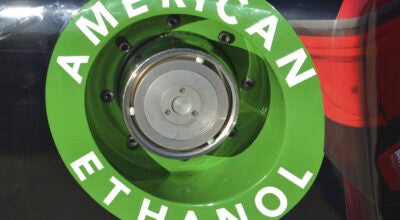MPCA wild rice approach walks political tightrope
Published 9:15 am Wednesday, March 25, 2015
By Elizabeth Dunbar and Tom Scheck, Minnesota Public Radio News
The Minnesota Pollution Control Agency Tuesday called for a “new approach” to regulate sulfate discharges in wild rice water, shifting from a single rule to calculating safe sulfate levels for 1,300 bodies of water.
The agency proposed using a complex formula that would weigh the amount of iron and organic carbon in a lake’s sediment to come up with a sulfate concentration level in the water that would be “protective” of the wild rice.
The proposed approach is “where the science has pointed us,” MPCA Assistant Commissioner Rebecca Flood told reporters Tuesday.
She emphasized the proposal was just the start of a conversation on water and wild rice health. MPCA officials expect to have a formal rule proposal ready by late summer. Flood said it may take two years to get new, final regulations in place.
It wasn’t immediately clear if the approach would satisfy business or environmental groups. Iron Range lawmakers, however, were calling the proposal a step forward.
The MPCA announcement came on the same day Gov. Mark Dayton went public with his concerns about tougher sulfate standards and their potential effects on U.S. Steel’s Minntac taconite plant in Mountain Iron.
U.S. Steel has said it would cost hundreds of millions of dollars in upgrades to meet the current standard — which prevents companies from discharging more than 10 milligrams of sulfate per liter of water — as part of its effort to renew a decades-old permit. The current sulfate standard was first established in 1973 but has rarely been enforced.
Sulfate is a natural chemical found in water and in discharges from mining operations and wastewater treatment plants. Bacteria can convert sulfates to sulfides. It’s a natural process, though high levels of sulfides in sediment where wild rice is rooted make the conditions “less hospitable” for the rice to grow, MPCA says.
Officials, however, said they now know that the rate at which sulfate gets converted into sulfide is affected by the levels of iron and organic carbon, so the current one-size-fits-all standard should be replaced with a formula that takes iron and organic carbon levels into account.
Dayton said the existing sulfate standard aimed at protecting wild rice is out of date, and pushing it could be catastrophic for northeastern Minnesota.
Flood said MPCA didn’t have data at this point to say how Minntac or any other facility would fare under the proposal. “Basically the answer there is we don’t know yet,” she said.
Asked if MPCA would move to enforce the current standard, Flood said, “We’re still looking at all the options that we have.”
The Minntac facility has long exceeded the state’s sulfate standard, which has rarely been enforced. Last month, lawmakers introduced several bills in the Legislature to prevent MPCA from enforcing any sulfate standard for wild rice until the rulemaking process is complete.
The agency said it’s been in contact with native tribes that harvest wild rice as well as the federal Environmental Protection Agency.
The proposed approach “does not weaken the standard at all,” said Katrina Kessler, a water assessment manager with MPCA. “Our goal is to protect wild rice.”




